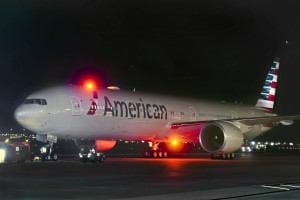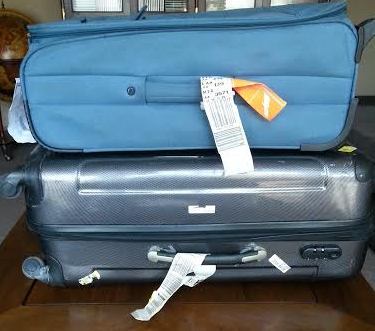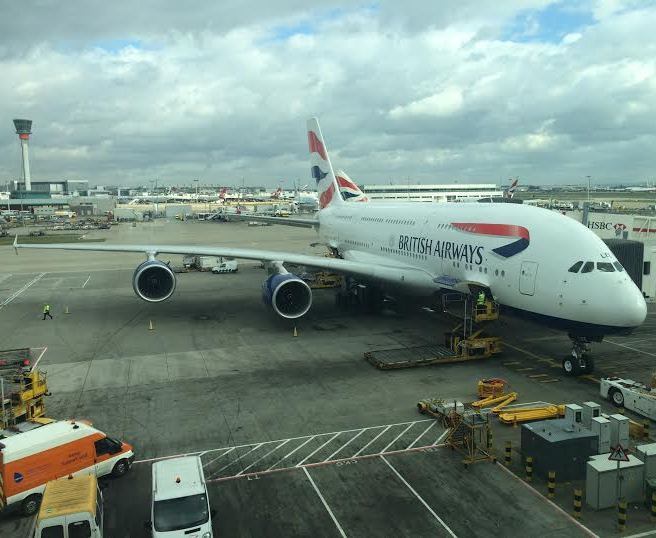 By now, we’re all aware that American Airlines has merged with US Airways. This will be the world’s largest airline, but for how long? We’ve seen airlines absorb each other and merge together in the past, but if history is any guide, it won’t be long until they start downsizing.
By now, we’re all aware that American Airlines has merged with US Airways. This will be the world’s largest airline, but for how long? We’ve seen airlines absorb each other and merge together in the past, but if history is any guide, it won’t be long until they start downsizing.
Right now, we starting to have a good idea of what the new airline will look like. After filing for bankruptcy, AMR Corporation, the parent company of American Airlines, was granted court approval to merge with US Airways Group. American is also starting to emerge from bankruptcy. A federal bankruptcy judge granted AMR Corp., approval to be able to send creditors solicitation material on June 20. The creditors will vote before July 29 with a hearing set for August 15, where AMR will be able to exit from Chapter 11 protection. The merger is expected to close in the third quarter of 2013, so long as no extenuating circumstances come up. Though insiders recently leaked that the airlines won’t know if the merger passes U.S. antitrust review until August, after American’s bankruptcy reorganization is confirmed.
The new management for the merged airline has been announced. AMR’s former CEO, Tom Horton, will continue as Chairman of the Board of the new American Airlines until the first meeting of the new board next year. Doug Parker, CEO at US Airways, is CEO of the new American Airlines, and will also be a member of the Board of Directors. Dan Garton, President and CEO of American Eagle Airlines, will step down from his position later this year once his replacement has been named.
Other positions within the new company have been divided from the two airlines.
From US Airways:
- Scott Kirby, President
- Elise Eberwein, Executive Vice President, People and Communications
- Robert Isom, Chief Operating Officer and Chief Executive Officer
- Stephen Johnson, Executive Vice President, Corporate Affairs
- Derek Kerr, Chief Financial Officer
From American Airlines:
- Beverly Goulet, Chief Integration Officer
- Maya Leibman, Chief Information Officer
- William Ris, Senior Vice President, Government Affairs
The corporate headquarters will remain in Dallas-Fort Worth, but the two airlines are going to continue business acting as two separate companies. Since the two airlines are going to act like they didn’t merge, their mileage and loyalty rewards programs are going to stay the same. But the long-term goal is to merge the two, and make it easier to gain rewards with even more companies.
All that aside, there’s a lot that we don’t know….
 Like food. American Airlines is known for providing the most food, while US Airways has a reputation for giving out the least amount of food. It’s not clear yet how this will work itself out on the flights, but it’s a sticky subject that makes a big difference to passengers.
Like food. American Airlines is known for providing the most food, while US Airways has a reputation for giving out the least amount of food. It’s not clear yet how this will work itself out on the flights, but it’s a sticky subject that makes a big difference to passengers.
It’s also not clear when the full changes are going into effect. The merger has been made, the top executives and board members have been hand-picked, but now all the other details that make travelers loyal passengers need to be ironed out.
Right now, the new American Airlines can easily boast that they will pass United (which is currently #1) for carrying the most passengers. But in this case, size isn’t necessarily a good thing.
As Wall Street Journal travel writer Scott McCartney noted in an NPR interview, “Today, American has about 44 percent of the traffic between Miami and Philadelphia. U.S. Air has about 54 percent. Put them together and you get the 98 percent.” And with that monopoly on a route comes an increase in airfares.
Right now, American Airlines has stated that they will have more flight options in their major hubs. But this hasn’t been true in the past. Take St. Louis as the classic example of airline consolidation. The St. Louis airport was once a major hub for TWA, and nothing but growth was projected. In 2000 the airport built an additional runway to handle the expected traffic, but then TWA was absorbed by American Airlines. They began to downsize in 2004, and now the extra runway is barely used and Southwest is the main carrier.
Between 2007 and 2012, U.S. carriers cut domestic flights by about 14 percent. Delta has just announced that it will drop Memphis as its major hub in the fall, and airports in other midsized American cities are also worried about their air service.
For more information on the merger history:
- What an American Airlines Merger Means for You
- Find out the industry’s reaction when American Airlines filed for bankruptcy
- See Peter’s CBS segment on the proposed American Airlines-US Airways merger
- Check out the behind-the-scenes report of American’s rebranding efforts
By Stephanie Ervin for PeterGreenberg.com












